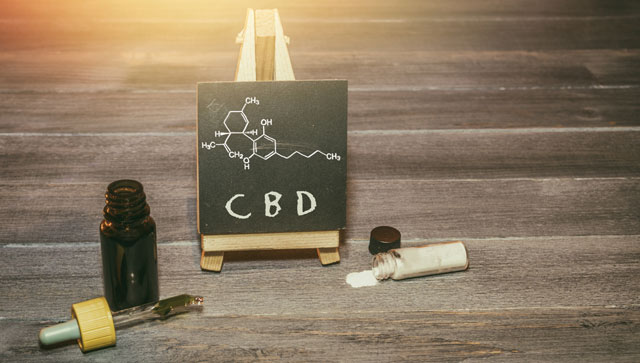Cannabidiol is a popular cannabinoid because it has far-ranging benefits. Thus far, it appears that cannabidiol is the holy grail in terms of the sheer amount of health issues that it can help with. Understanding how it works will drastically help you utilize this incredible compound, as well as helping with those highs that become all-too-intense.
CBD and The Endocannabinoid System
Cannabidiol is a busy cannabinoid. Once you consume it, it begins to work its magic as it makes its way to the endocannabinoid system. It’s during this migration that CBD makes noticeable effects within your body. Let’s take a look at each.

Transportation of CBD
The beginning of CBD’s journey starts once you consume it. This can be via topical application, smoking, vaporizing, ingestion. For CBD to take effect, it needs to travel to the molecular level of your body. Its primary method of gaining access to this level in your body is via fatty acid-binding proteins (FABP).
However, CBD works in a unique way as it travels towards the molecular level of your body. First, the moment it reaches a FABP – it blocks all other cannabinoids from entering. This immediately shows that CBD wants to be the dominant cannabinoid in your body. This blockage allows CBD to gain a monopoly on the elevator system because it only allows CBD molecules in.
As the FABP begins to travel to the molecular level, CBD doesn’t allow anandamide (a key endocannabinoid) to be transported with it. Anandamide functions by breaking down within the FABP, but CBD blocks this from happening – thus raising anandamide’s concentration.
Once at the molecular level, CBD begins to trigger various compounds and can even alter the size of receptors – furthering its influence in your body.
Allosteric Modulation
Once at the molecular level, CBD is capable of modifying the size of CB1 receptors. This process is known as allosteric modification, and it’s the primary reason why it’s believed that CBD can reduce the psychoactive effects of THC.
Although CBD doesn’t bind with CB1 receptors, it immediately changes the size so that THC molecules can no longer bind to them. THC makes us feel “high” because it attaches to CB1 receptors and blocks them from functioning. By reducing or increasing their size, CBD makes it impossible for THC to block your receptors.

CBD and Indirect Effects
CBD primarily affects the CB2 receptor group – but in an indirect way. Unlike THC, CBD doesn’t directly bind to endocannabinoid receptors, but rather, triggers other compounds within the body to interact with the CB2 receptor group.
CBD is known to interact with the transient receptor potential vanilloid protein (TRPV1). This protein is regarded as one of the most effective compounds that reduce inflammation, pain, and even influences the immune system. However, the TRPV1 protein needs a push to interact with the CB2 receptor group – which CBD accomplishes in doing.
Additionally, researchers have found that the TRPV1 protein plays a direct role in decreasing anxiety because it’s a natural anxiolytic.
Therefore, CBD indirectly triggers the CB2 receptor group to begin functioning. Alongside the natural relieving ability of TRPV1, CB2 receptors activate to provide relief throughout the body. The CB2 receptors are known to directly influence your immune system, organ function, pain management, and your ability to fall asleep.
Aside from TRPV1 proteins, CBD is also known to stimulate peroxisome proliferator-activated receptors (PPARs). There are three types of PPARs: alpha, gamma, and delta. These three components makeup PPARs and are directly activated via CBD.
PPARs are known to produce analgesic (painkiller), anti-inflammatory, metabolic, neuroprotective, anti-tumor, and beneficial cardiovascular effects. PPARs do not interact with the CB1 or CB2 receptor groups, which means there are inherent capabilities that they contain.
PPARs are normally inactive unless specific occurrences take place, such as the presence of particular hormones, fatty acids, and nutrients in the body. If these compounds are not present, then PPARs won’t activate. However, CBD has the ability to enable PPARs to take effect immediately.

How To Use CBD To Reduce A Too Intense High
Now that you understand how CBD works within your body, it’s time to understand how you can use it to reduce an overbearing THC high. Ever since the legalization of cannabis in many states, first responders have been inundated with calls from individuals who believe they are experiencing an overwhelming high.
If you are unsure of your THC tolerance, it’s a good idea to always carry a CBD product, such as CBD tincture of CBD vape pen. These products are useful in dispensing a rapid dose of CBD when you need to reduce the severity of a high immediately.
CBD can do this because of its allosteric modulation ability, as you may remember learning from this article. Once you consume CBD, it will immediately modify the receptor that THC molecules are bound to. Once this occurs, the THC molecules can no longer block the receptors. Slowly, but surely, your intense high will begin to dissipate.
It’s a common sight to see individuals who are new to cannabis products lose control after over-indulging in a THC-rich product. By always have CBD on hand, you can reduce adverse effects, such as paranoia, fear, anxiety, and nausea.
A Versatile Cannabinoid
As you can see, cannabidiol is an incredibly versatile compound. It triggers not only your endocannabinoid system but, also various compounds that provide extraordinary benefits. The fact that CBD can also be used to counteract the effects of THC is astounding and gives people the opportunity to reduce the effects of THC if it becomes too difficult to deal with.

